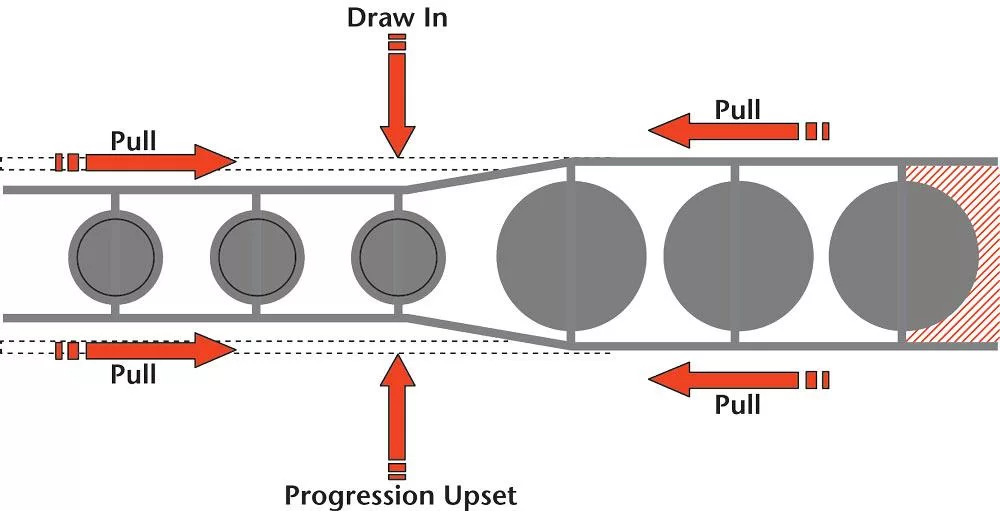There are several types of molds
A mold is a tool used to manufacture various industrial products. Molds can be divided into many types according to different manufacturing requirements and uses. This article will introduce several common molds from the perspective of mold classification.
1. Stamping mold
Stamping mold is the most common type of mold, which is mainly used for stamping molding. Stamping is to pass a metal sheet through a stamping machine and other equipment, and use impact force to press the metal sheet into a specific shape and size. The main components of the stamping mold include the mold base plate, punch, guide pillar, etc. According to the shape and size of stamping parts, stamping molds can also be divided into single-station molds, continuous molds, composite molds and other types.
which kind of product use Stamping mold ?
Stamping molds are commonly used in the manufacturing of various products made from sheet metal, plastics, or other materials. Some of the products that utilize stamping molds include:
Automotive Parts: Such as car body panels, chassis components, brackets, and structural parts.
Consumer Electronics: Enclosures for smartphones, tablets, and laptops often involve stamping molds.
Household Appliances: Components for refrigerators, washing machines, and ovens can be produced using stamping molds.
Aerospace Parts: Aircraft and spacecraft components, like panels and structural elements, are often manufactured with stamping molds.
Medical Equipment: Some medical devices and equipment, such as certain instrument casings or components, may be created using stamping molds.
Packaging: Various types of packaging materials, like aluminum cans or plastic containers, are made using stamping molds.
These molds are versatile and can be customized for different shapes, sizes, and materials, allowing for the mass production of precise and consistent parts.
what is the Different types of stamping molds ?
Progressive Dies: These advanced molds are perfect for high-volume projects, guiding materials through multiple stages to shape them accurately and swiftly.
Compound Dies: Ideal for smaller production runs, these molds perform multiple operations in a single stroke, ensuring efficiency and versatility.
Blanking Mold: Craft flat pieces effortlessly by cutting predetermined shapes from larger material sheets, ideal for various applications.
Forming Mold: Shape materials without cutting, creating bends, stretches, or reshaping to meet specific design requirements.
Piercing Dies: Designed for creating precise holes or piercing shapes in materials, offering versatility in fabrication.
Draw Dies: Efficiently craft cylindrical or box-shaped components by drawing material through a die cavity, delivering precise results.
Bending Dies: Craft brackets, frames, and more with ease, precisely bending materials at specific angles to meet design needs.
Embossing Dies: Add decorative patterns and designs to surfaces by raising or impressing designs onto materials for aesthetic appeal.
Coining Dies: Perfect for creating detailed impressions on coins and medals, delivering intricate designs on both sides of the material.
Understanding these various stamping molds empowers efficient and precise manufacturing, catering to a range of production needs while ensuring accuracy and quality.”
2. Injection mold
Injection mold is a mold used to make plastic products. Injection molding is to heat and melt plastic particles and then inject them into a mold. The plastic is filled into the cavity in the mold through the pressure of the injection molding machine. After cooling, it is demoulded and formed. The main components of injection molds include molds, mold base plates, runners, ejector pins, etc. According to the shape and size of injection molded parts, injection molds can also be divided into single-cavity molds, multi-cavity molds, home appliance molds, automobile molds, etc.
3. Die-casting molds
Die-casting molds are mainly used to manufacture metal products such as aluminum alloys and zinc alloys. Die-casting is to heat and melt the metal material and then inject it into the mold. The metal material is filled into the cavity in the mold through the pressure of the die-casting machine. After cooling, it is demoulded and formed. The main components of the die-casting mold include the mold, mold base plate, runner, die-casting machine, etc. According to the shape and size of the casting, die-casting molds can also be divided into cold chamber molds, hot chamber molds, automobile molds and other types.
4. Extrusion mold
Extrusion mold is mainly used to manufacture long or special-shaped plastic products. Extrusion molding is to heat and melt plastic particles through an extruder, and then extrude the molten plastic through a mold. The main components of the extrusion mold include the mold, mold base plate, extrusion head, etc. According to the shape and size of extruded parts, extrusion molds can also be divided into various types such as special-shaped molds, pipe molds, and plate molds.
5. Stretching mold
Stretching mold is mainly used to manufacture thin-walled containers for plastic products. Stretch molding is to heat and soften a plastic sheet and then stretch it into shape, and then use a compressor or other equipment to form it. The main components of the stretching mold include the mold, mold base plate, compressor, etc. Depending on the shape and size of the drawn parts, drawing molds can also be divided into various types such as bottle cap molds, food box molds, cosmetic bottle molds, etc.
The above are several common mold types, each of which has its own unique characteristics and application range. In industrial manufacturing, the role of molds cannot be underestimated. It can greatly improve production efficiency and product quality, and brings great convenience and benefits to industrial manufacturing.
















